Schinus molle
Peruvian peppertree, California peppertree, Brazilian peppertree, American pepper, Escobilla, False pepper, Molle del Peru, Peppercorn tree, Californian pepper tree, Pirul, Peruvian mastic tree, Peruvian Pepper Tree, Aroeira salsa

In the 1800s, Schinus molle thrived abundantly on high-elevation slopes and in shaded canyons of the Peruvian Andes, where the Quechua Indians referred to the tree as 'mulli’. For centuries, the Quechuans extracted oils from the tree’s fruit and leaves, using them to treat a variety of wounds and infections.
In 1830, a merchant ship arrived at a harbor in Oceanside, California. Along the wooden dock, wagons from Mission San Luis Rey de Francia awaited, ready to pick up sacks of cocoa, Yerba mate, sugar, and guano of Peruvian pelican, the sought-after fertilizer. Among the goods was a small rattling container addressed to Father Antonio Peyri, then in charge of the Mission’s development. Upon opening the package, Father Peyri discovered a folded note and a packet of seeds. Without delay, grounds near the lavatory were prepared for planting, and Father Peyri seeded the new contribution to the Mission’s horticultural menagerie—the very first Schinus molle trees in California.
Ninety years passed, then in 1922, the entrepreneurial Victor Girard purchased barren land in the southwest portion of the San Fernando Valley. With steadfast determination to transform the bleak terrain into an enchanting urban landscape, he planted 120,000 shade trees. The result of his bold effort is the charming, livable town of Woodland Hills. Today, the once barren land is admired for its lush vegetation and signature pepper trees, which unassumingly line Canoga Avenue and many hillside streets.
Indeed, the tree’s fine-textured, dense canopy, providing shade and relief from heat, became a popular icon within the California landscape. The attractive weeping habit of this xeriscape evergreen draws attention all year round. During the blooming season, panicles of small, creamy-yellow flowers pop open at the ends of drooping branches, turning into pendants of pepper-sized reddish berries on female trees through fall and winter. Although these berries do not produce commercial-grade pepper corns, recent pharmacological studies have shown that S. molle oils possess antioxidant and antimicrobial properties, suggesting their potential use in the food or pharmaceutical industries.
Quick facts
Height: 25-40 feet
Width: 25-40 feet
Leaves: evergreen
Soil: clay, loamy, sandy, moist, well drained
pH: acid, neutral
Exposure: full sun to partial shade, sheltered from wind
Water: low water
Tolerance: drought tolerant, xeriscapic
Toxicity: not found
Allergen: male trees can produce a large amount of pollen
Pronunciation of Schinus molle: SKY-nus MOLE-ee
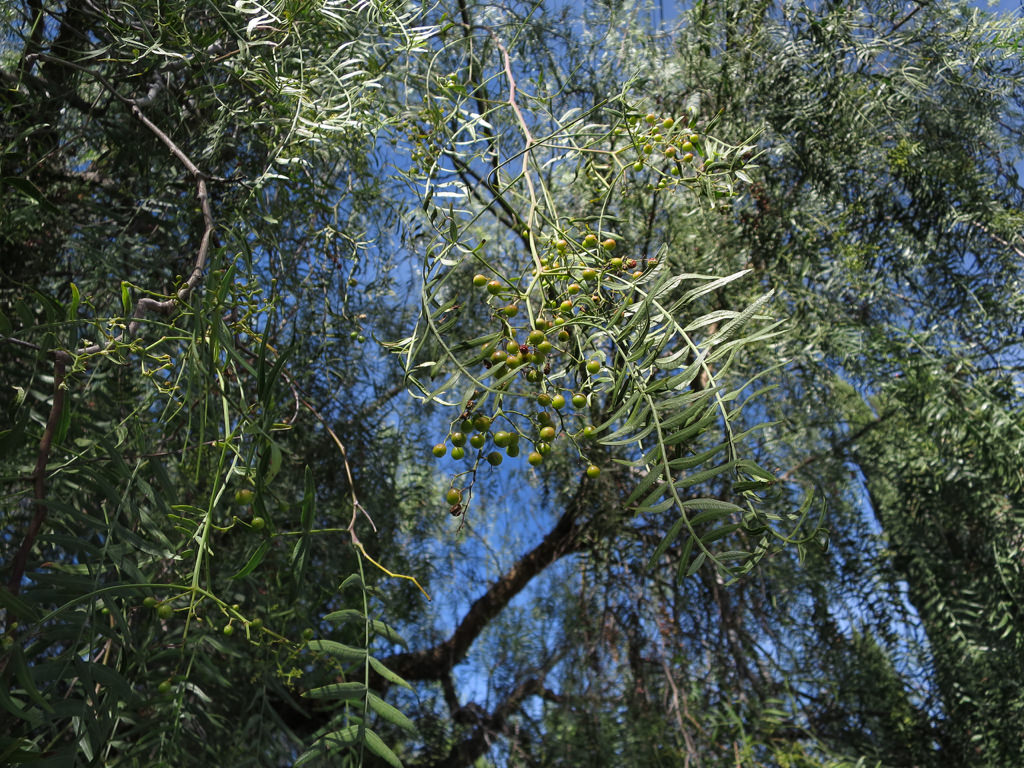
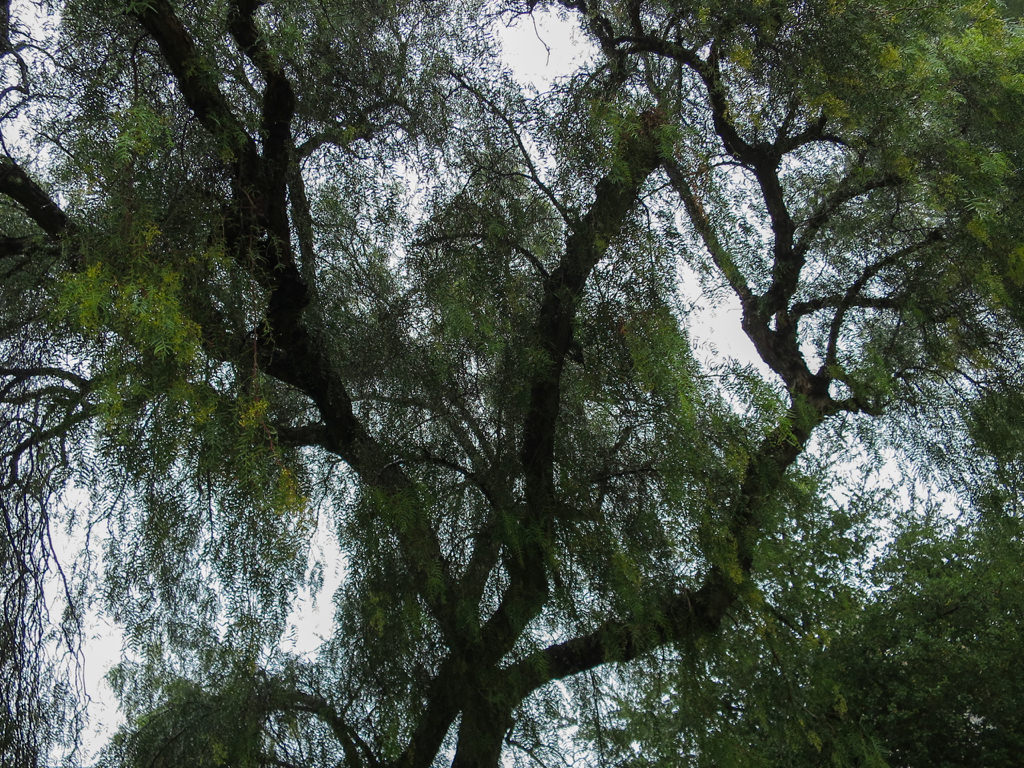
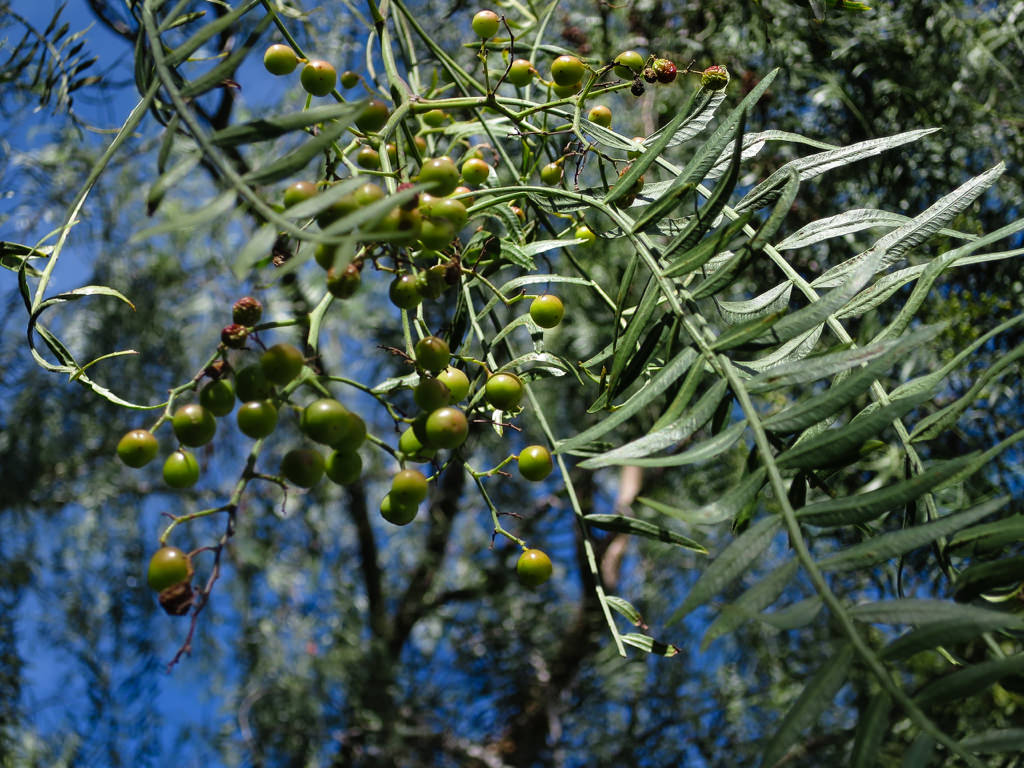
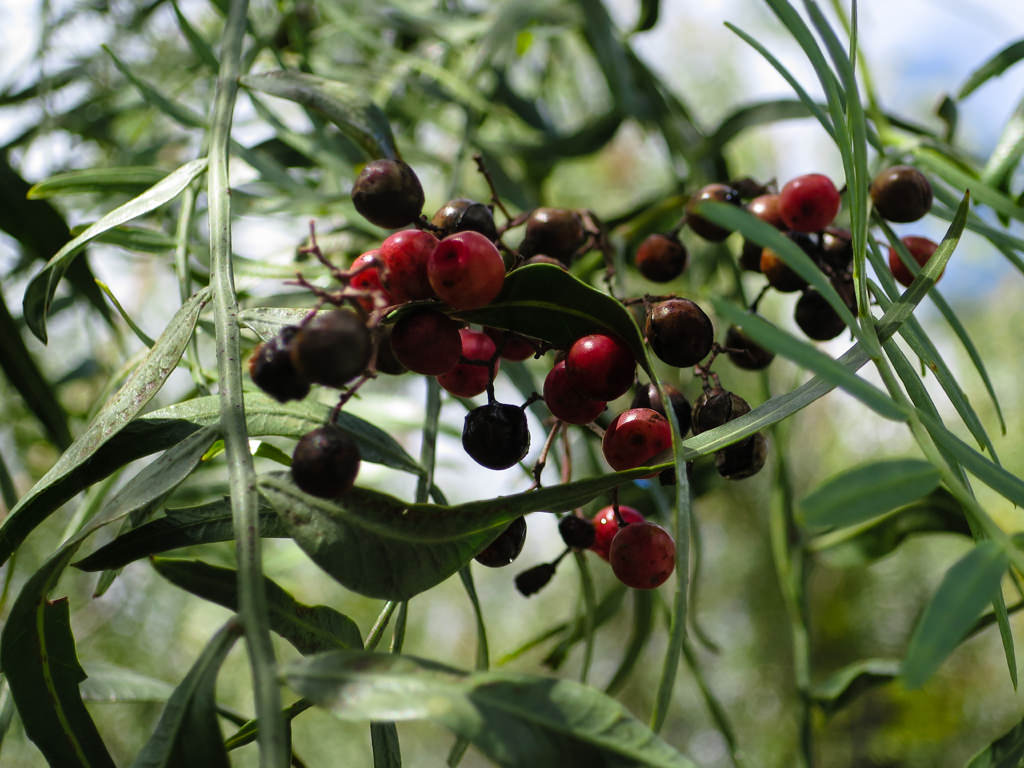
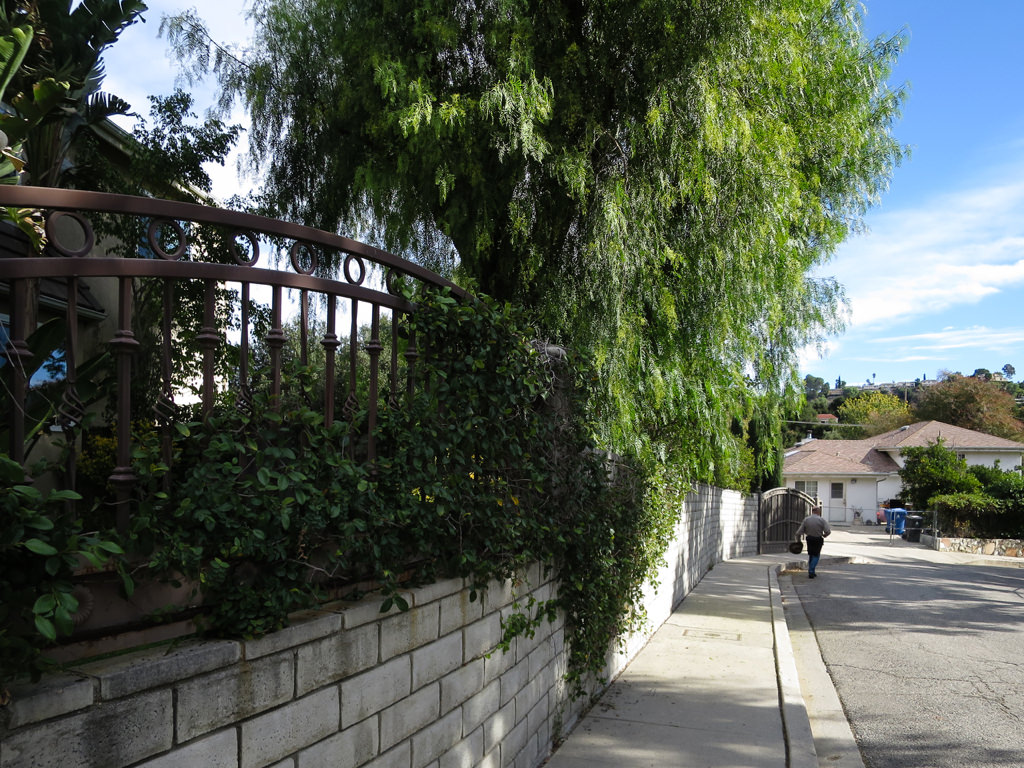
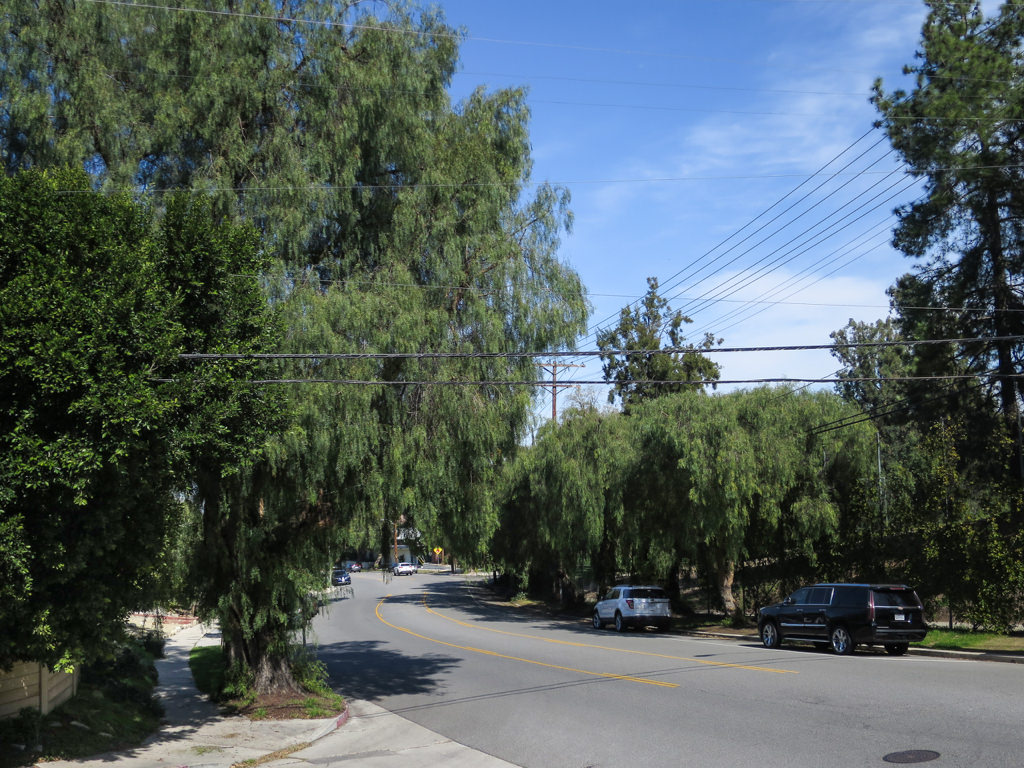
References
Martins Mdo R; Arantes S; Candeias F; Tinoco MT; Cruz-Morais J. (n.d.). Antioxidant, antimicrobial and toxicological properties of Schinus molle L. Essential Oils. Journal of ethnopharmacology. https://tinyurl.com/3f5efcnb
Anonymous. (n.d.). History of Mission San Luis Rey de Francia. Mission San Luis Rey Museum. https://www.sanluisrey.org/museum/history
Anonymous. (n.d.). Peruvian Peppertree on the grounds of Mission San Luis Rey de Francia in Oceanside, California. Monumental Trees. https://www.monumentaltrees.com/en/usa/california/sandiegocounty/22882_missionsanluisreydefrancia/
Anonymous. (n.d.). Schinus L. International Dendrology Society: Trees and Shrubs Online. https://www.treesandshrubsonline.org/articles/schinus/
Anonymous. (n.d.). Schinus molle. California Invasive Plant Council. https://www.cal-ipc.org/plants/profile/schinus-molle-profile/
Anonymous. (n.d.). Schinus molle (California peppertree). Shoot Gardening. https://www.shootgardening.com/plants/schinus-molle
Anonymous. (n.d.). Schinus molle - California Pepper Tree. San Marcos Growers. https://www.smgrowers.com/products/plants/plantdisplay.asp?plant_id=1486